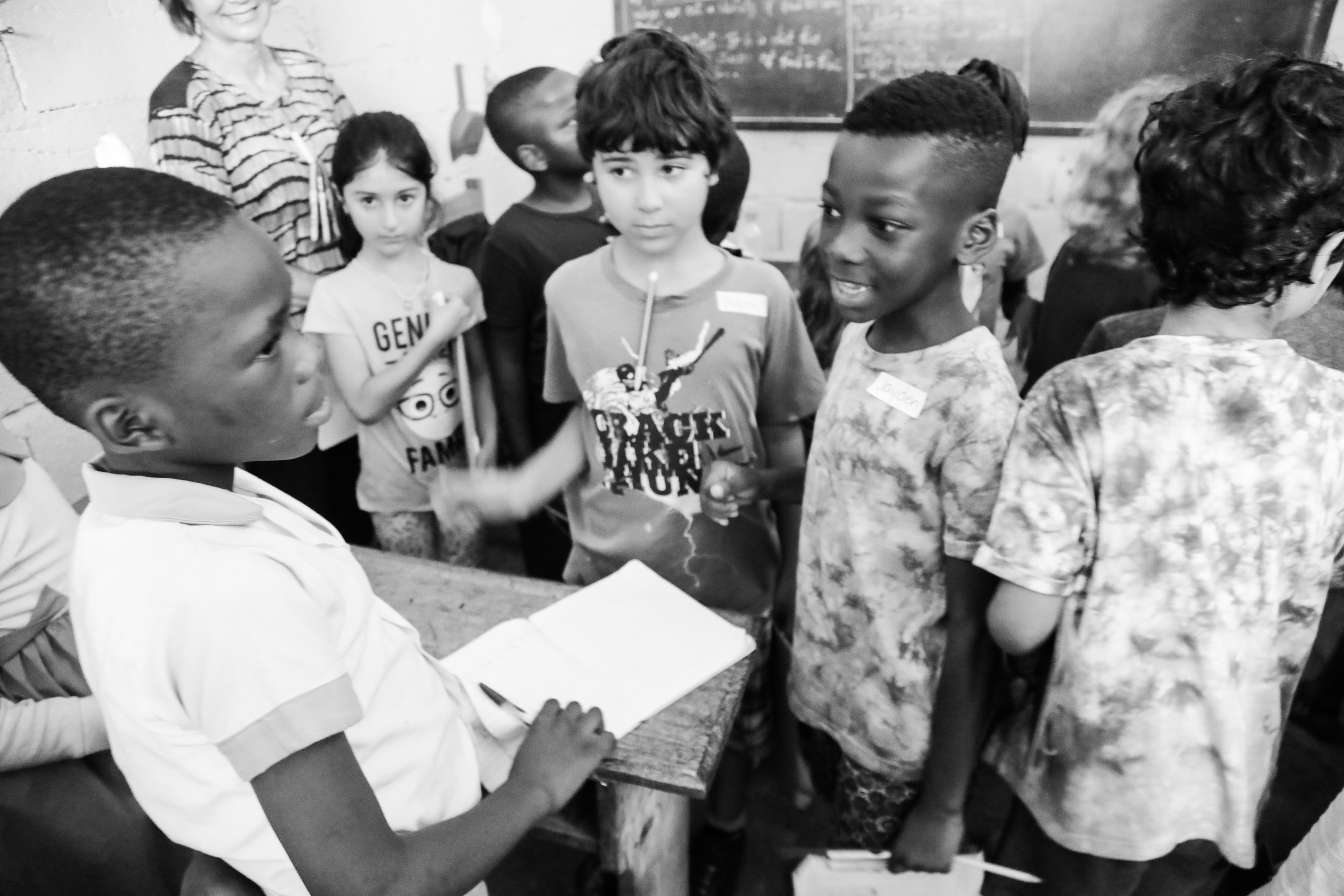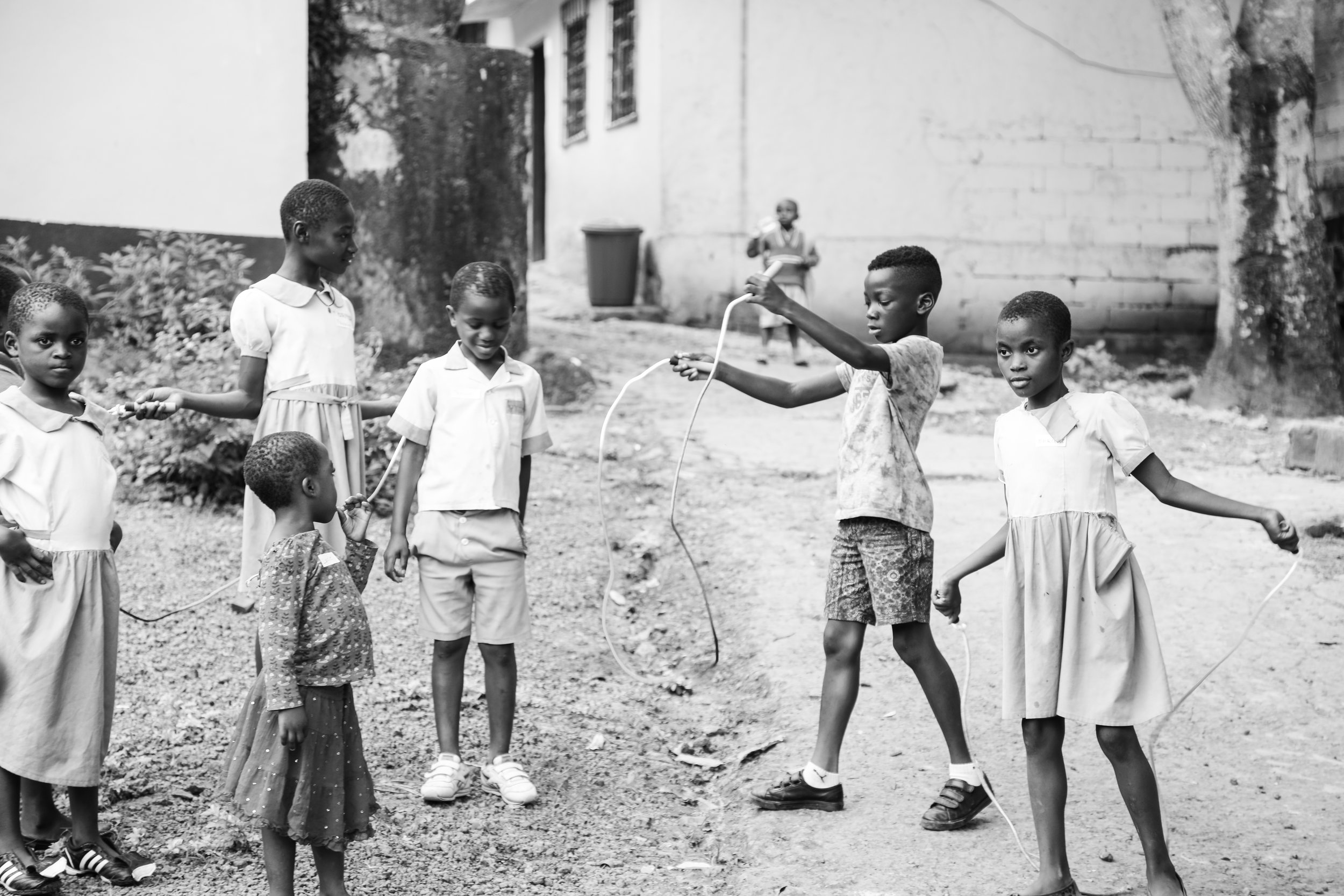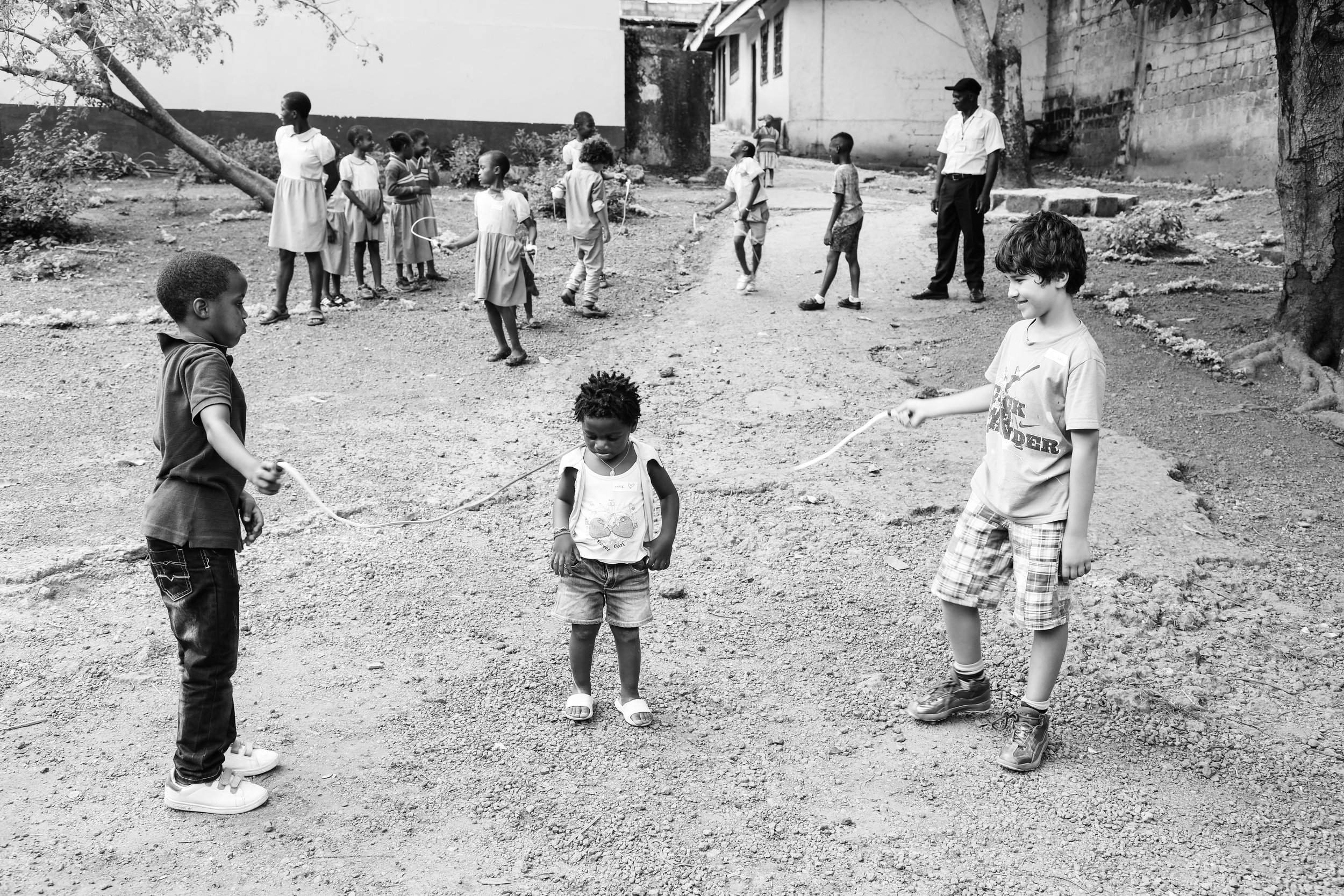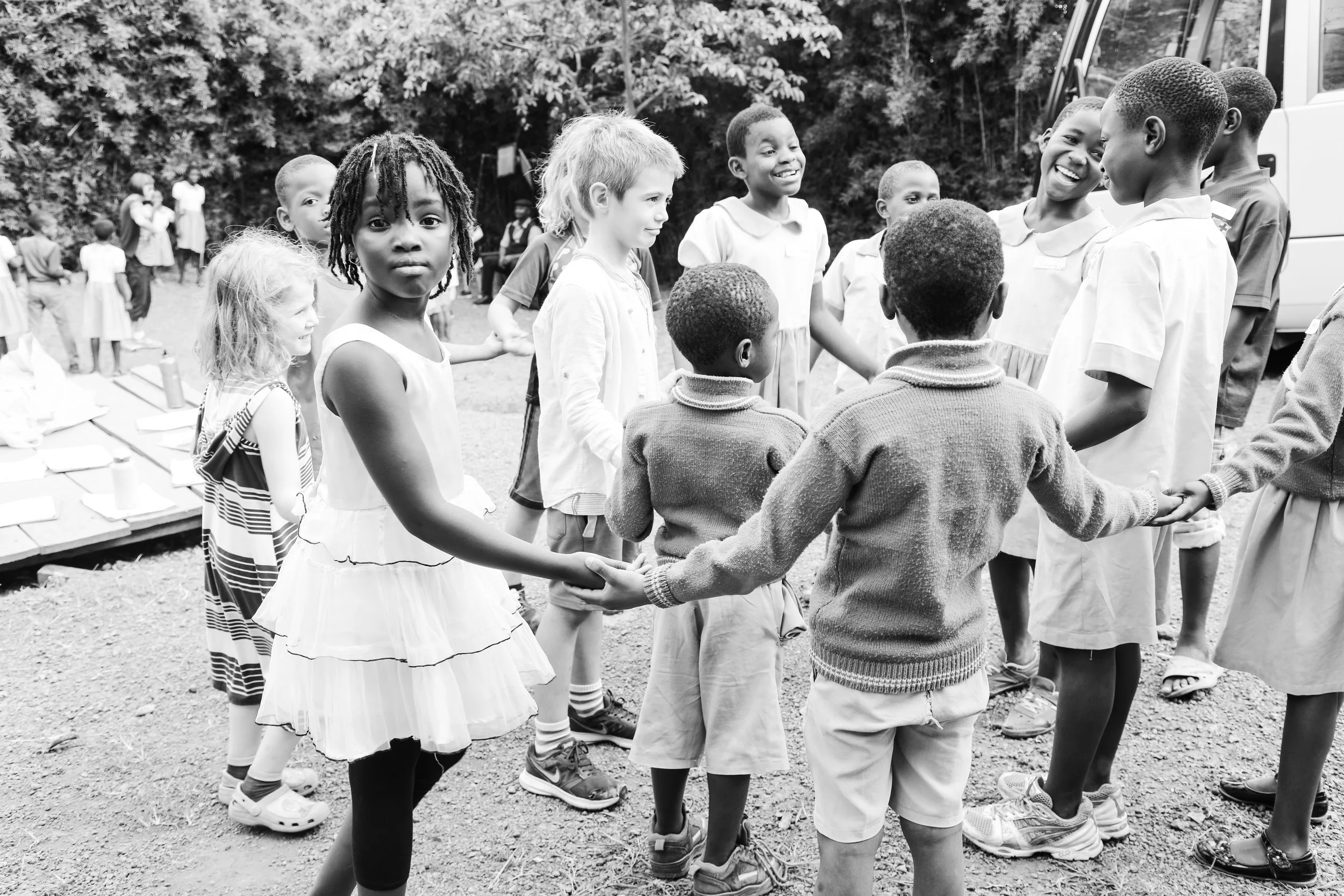As part of their unit of inquiry (UoI) "Who we are", 19 second grade students at the American School of Yaounde (ASOY) have been studying the body systems.
It was decided to extend the project to the nearby Saint Therese Orphanage which hosts 34 children.
I conducted for ASOY a design thinking exercise involving 53 children on the how we might keep our bodies healthy.
Design thinking is an innovative process to address issues and challenges by generating ideas and finding solutions in a participatory manner. The idea behind design thinking is that solutions found WITH the stakeholders rather than FOR them are more sustainable.
In the case of these children, it was felt that by empowering the children to ideate and design a solution the outcome would be more powerful.
Before meeting the children of Saint Therese, we held a preparatory session with the ASOY kids. We talked about what it means to be an orphan. We prepared the students by trying to envision what we would see during our visit at the orphanage. This is a crucial EMPATHY step in design thinking, i.e. UNDERSTANDING where all participants come from and finding a common language.




During our first visit at the orphanage, the students developed a better understanding of the living conditions in Saint Therese. They visited the classrooms and the dormitories of their new friends, observed their habits and checked out the bathrooms and cooking situation and ended the visit by playing different games together. This was an important part of the EMPATHY phase.
The following day, back at ASOY, we had a quick session DEFINING the problem to tackle with our limited resources. Together with six new friends from Saint Therese, we discussed our observations from the day before and began the process of IDEATING solutions.
The students came to the conclusion that tackling Malaria would be the most important and urgent intervention. Children observed there were no mosquito nets around and after inquiring with the sister running the orphanage, Soeur Marie Louise, and the children we found out that in fact a lot of children get sick with Malaria, which is of life-threatening type in Cameroon.
During the PROTOTYPING phase we built some mock-up dormitories and tried out a giant mosquito net potentially covering ALL the bunkbeds at once…and learned quickly that this was not a good idea as the bottom of the nets would touch the floor, attract insects and dirt and would get ripped easily.
We prototyped another solution where we would install basically a "mosquito net ceiling" from wall to wall (there are gaps between the roof and the walls) and put up screens at the window/door.
Another visit at the orphanage followed, this time with some representatives from grade 2 rather than the whole grade, and a carpenter and a seamstress to TEST and see if our plan was actually feasible.
It became clear that we’d rather needed a "real" ceiling in one of the dorms and that this would also take care of the mosquitos entering the room from the roof.
Further everybody agreed that a coat of paint is desperately needed in both dorms to create a healthier environment for the kids to sleep in.









